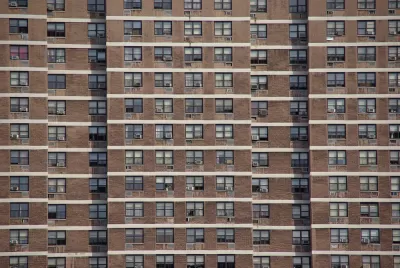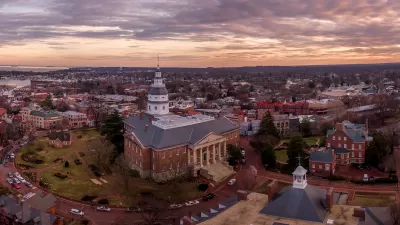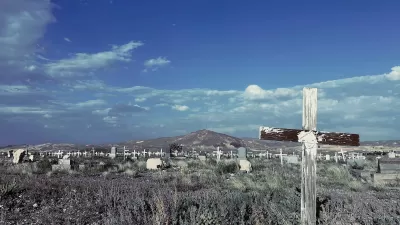What are the New Deal for Housing Justice and the BREATHE Act and how do they move beyond previous housing agendas?

Earlier this year, the Housing Playbook Project released the New Deal for Housing Justice—a set of policy recommendations to help solve the U.S. housing crisis, which has been made worse by the pandemic. And The BREATHE Act, a project of the Movement for Black Lives’ 501(c)(4) Electoral Justice Project, offers a radical reimagining of public safety and community care. Shelterforce, Neighborhood Funders Group, and Funders Together to End Homelessness hosted a conversation on March 10 with people involved in each to discuss the highlights of each proposal and what needs to happen next.
Joining us were Jennifer Cossyleon, a Mellon ACLS Public Fellow at Community Change Action, which managed the New Deal for Housing Justice process and is now working on organizing support for implementing its priorities; Jeremie Greer, co-executive director of Liberation in a Generation, who is a contributing author to the New Deal for Housing Justice; and Philip McHarris, a researcher with the Movement for Black Lives and a doctoral candidate at Yale University.
Miriam Axel-Lute: At every transfer of power, affordable housing advocates—like advocates of every cause—generate lists of recommendations for the new administration. How is the New Deal for Housing Justice different from these documents that come every four to eight years?
Jeremie Greer: [What] really distinguishes this one from the others: its focus on centering racial justice.
It looks at policies that would advance racial justice, but it also integrates racial justice into other sections, like around public housing, homelessness, rural housing. It doesn’t make that false choice that people often do, where it’s like, “Well, do we integrate it through all, or do we focus [on] it?” It actually does both.
The other way [it’s] important is that it actually diagnoses the problem differently than other housing platforms and agendas have done in the past. Traditionally, the job of policy is to try to correct for market failures that create disparity between Black renters, Latinx renters, and white renters, but bound into an assumption that the market is not the problem.
[The New Deal for Housing Justice] diagnoses the problem differently: racism is built in and baked into the housing market, and it has been since its inception, all the way from Indigenous land that was taken when the settlers got here to slavery and then sharecropping and Jim Crow, and so on and so on. When you look at it from that perspective, you actually think about policies that are not going to correct for problems, but actually create new systems that stop oppression and start to build the kind of housing market that works for Black, Brown, Indigenous, and other people of color.
Let’s bring the BREATHE Act into this. Philip, can you give us some background about how it was drafted, what it covers, and what role housing plays in it?
Philip McHarris: The BREATHE Act is a wide-reaching omnibus bill, and it builds on the vision for Black lives; in light of nationwide calls to reallocate police funding and divest from systems of punishment.
This visionary bill divests our taxpayer dollars from brutal and discriminatory policing, [and] invests in a new vision of public safety, a vision that answers the call to defund the police and allows all communities to finally breathe free. It centers building up communities and community resources through health care, education, [and] employment.
And of course, within the BREATHE Act, housing is a fundamental right. [Housing] has for too long been made out of reach to Black, Latinx, Indigenous, and other communities of color. And especially given its history of racial discriminatory housing policies and practices, the federal government must ensure that historically excluded groups have meaningful access to affordable housing. [The BREATHE Act is] written as a federal bill that can also be applied at state levels.
The BREATHE Act was drafted by the Electoral Justice Project by the Movement for Black Lives. The proposed policies overlap a lot with the New Deal on Housing Justice—it includes investments in robust social housing development program, money to address the public housing backlogs of repairs, fully funding Section 8 vouchers, as well as creating pathways for affordable housing.
We know that safe housing reduces the likelihood of harm and conflict and violence within communities, and it cultivates safety and provides a central base for building secure and stable communities.
Can you give us a sense of the scope of the New Deal for Housing Justice?
Greer: It’s really comprehensive. We wanted to make sure that ...
FULL STORY: A Movement-Based Federal Housing Agenda

Study: Maui’s Plan to Convert Vacation Rentals to Long-Term Housing Could Cause Nearly $1 Billion Economic Loss
The plan would reduce visitor accommodation by 25,% resulting in 1,900 jobs lost.

Alabama: Trump Terminates Settlements for Black Communities Harmed By Raw Sewage
Trump deemed the landmark civil rights agreement “illegal DEI and environmental justice policy.”

North Texas Transit Leaders Tout Benefits of TOD for Growing Region
At a summit focused on transit-oriented development, policymakers discussed how North Texas’ expanded light rail system can serve as a tool for economic growth.

Paris Bike Boom Leads to Steep Drop in Air Pollution
The French city’s air quality has improved dramatically in the past 20 years, coinciding with a growth in cycling.

Why Housing Costs More to Build in California Than in Texas
Hard costs like labor and materials combined with ‘soft’ costs such as permitting make building in the San Francisco Bay Area almost three times as costly as in Texas cities.

San Diego County Sees a Rise in Urban Coyotes
San Diego County experiences a rise in urban coyotes, as sightings become prevalent throughout its urban neighbourhoods and surrounding areas.
Urban Design for Planners 1: Software Tools
This six-course series explores essential urban design concepts using open source software and equips planners with the tools they need to participate fully in the urban design process.
Planning for Universal Design
Learn the tools for implementing Universal Design in planning regulations.
Smith Gee Studio
Alamo Area Metropolitan Planning Organization
City of Santa Clarita
Institute for Housing and Urban Development Studies (IHS)
City of Grandview
Harvard GSD Executive Education
Toledo-Lucas County Plan Commissions
Salt Lake City
NYU Wagner Graduate School of Public Service





























